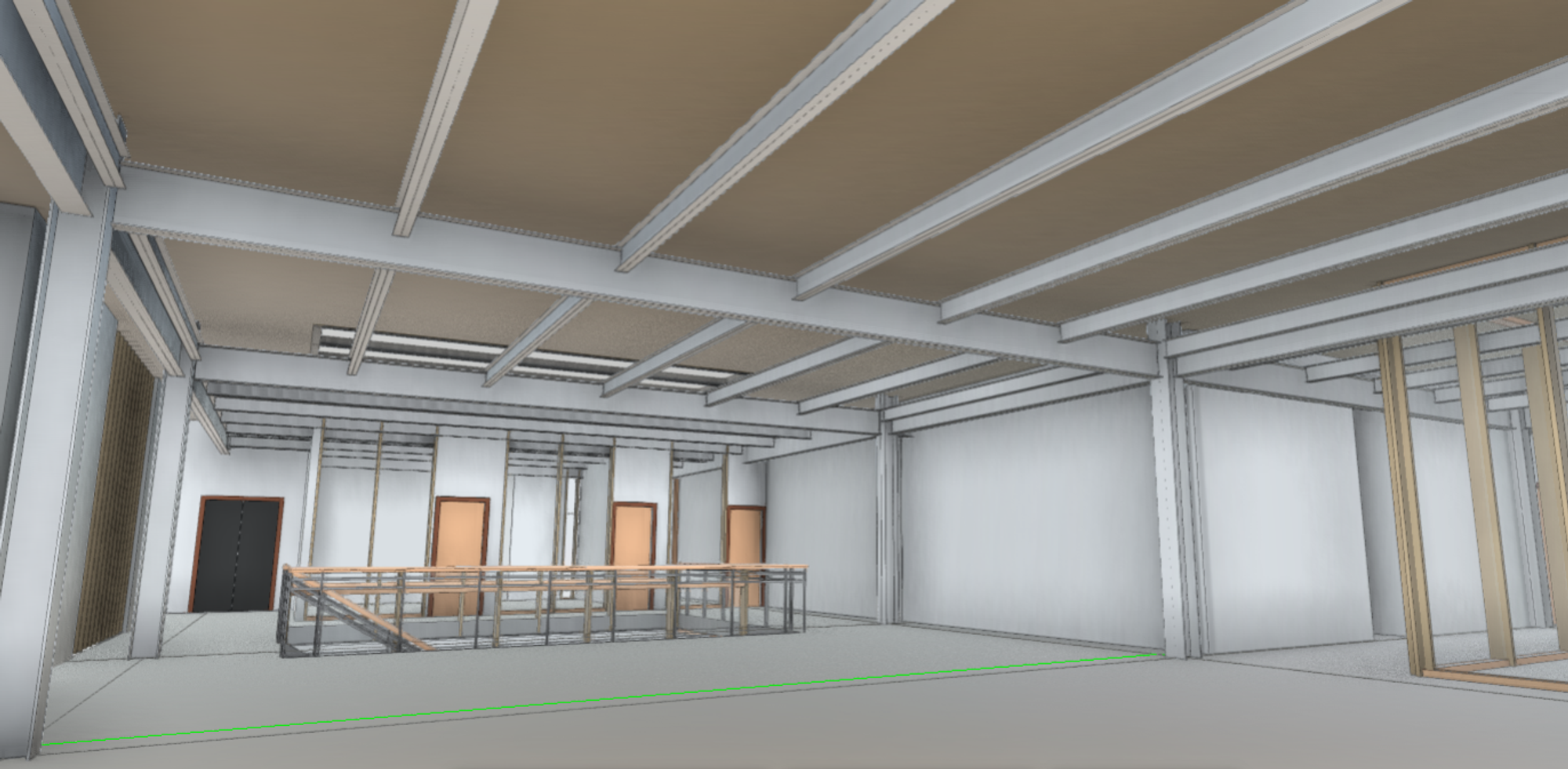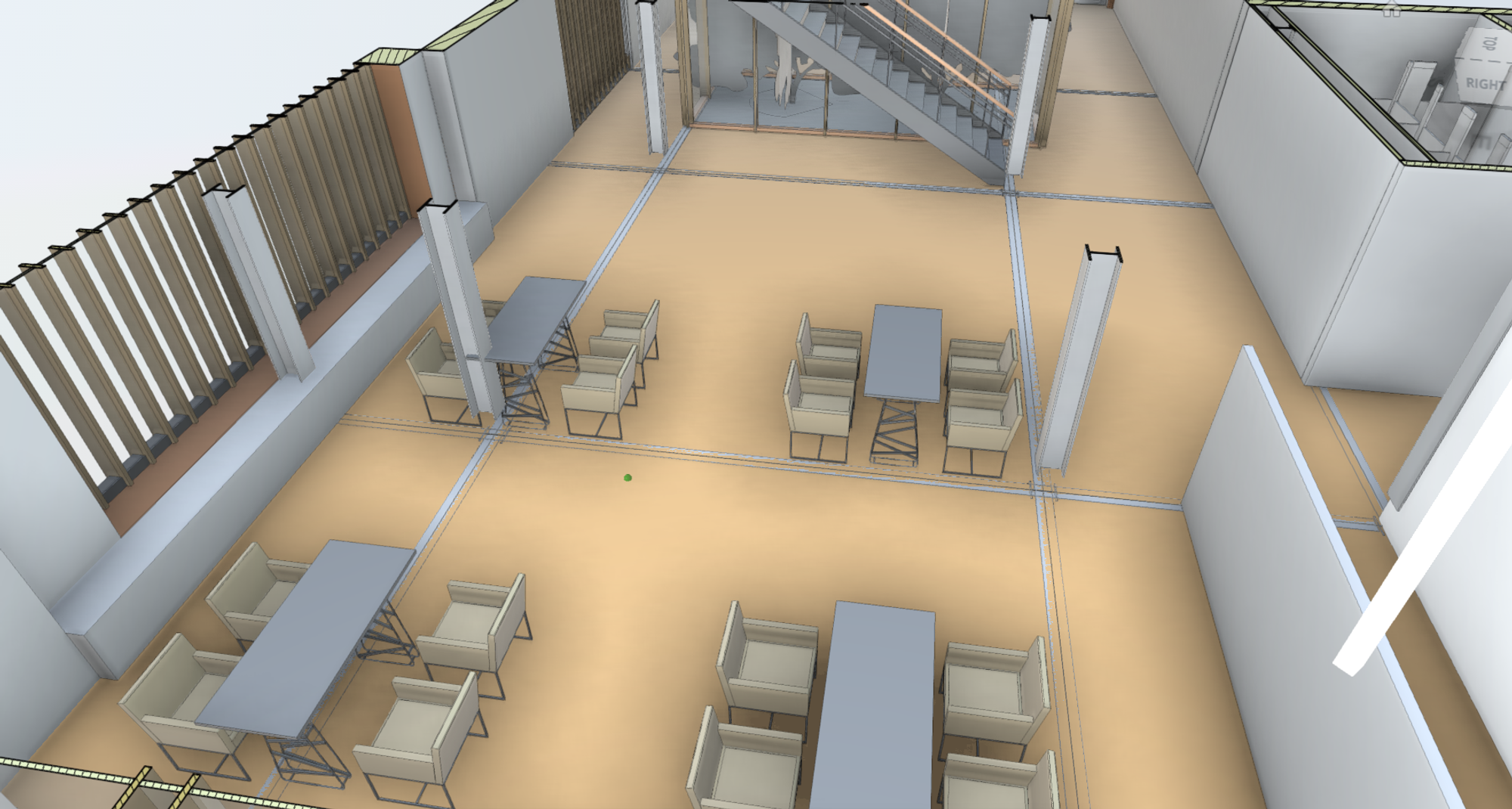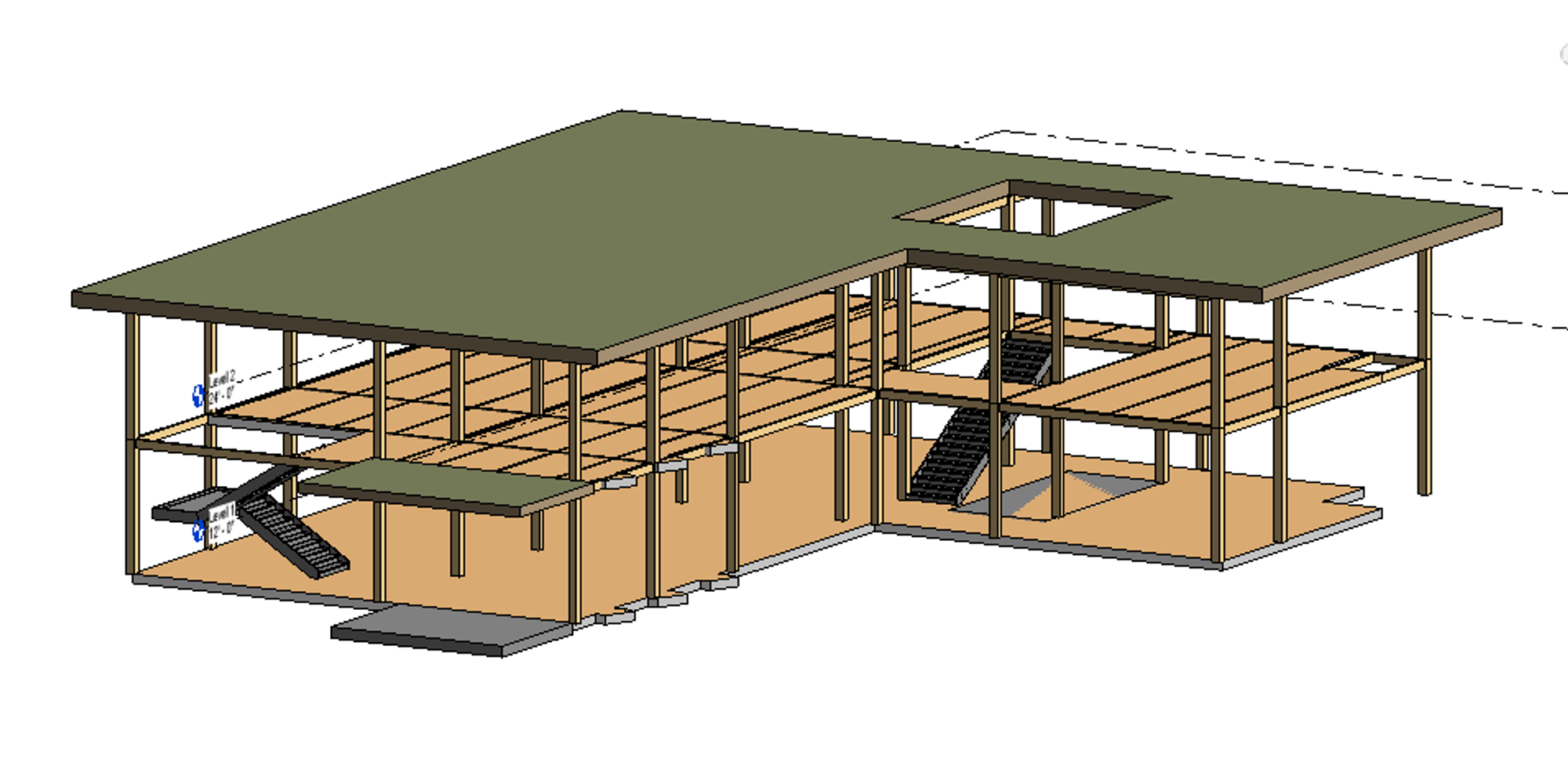Focus
The focus of this exercise is to understand how different structural system alternatives would affect the aesthetics and spatial feeling of a proposed building design.
Design Goal
The goal for this exercise is to create a model of a structural framing system that not only meets the functional and safety requirements, but also meet the designer’s aesthetic and spatial design goals.
Use this Revit model as the starting point for this exercise:
Explore this model of architectural model and think about the designer’s goals:
- Where are the openings on the floors?
- Elevator, Stairs, Atrium
- Where are the main circulation flows?
- Hallways, Entrances, Interior Doors
- What kind of spatial relationships are being created by the spaces?
- Open Spaces, Gridded Spaces (offices)
- Where are the views opportunities?
Then consider, what kind of structural system could be used to meet the structural requirements as well as supporting the design goals?
Design Tasks
- Create a new Revit structural model using the Structural Analysis-Default template.
- To find this template, select File > New Project, then click the Browse button next to the menu of Template files.
- Choose the Structural Analysis-Default template.
- Download this architectural model, and use the Insert>Link Revit model tool using the Auto-Internal Origin to Internal Origin positioning option to link it to your new structural model.
- Model a recommended framing system design for this building in your new structural model. Your design should include:
- Grids
- Structural Columns
- Beams and Beam Systems(Be sure to accommodate the stairs and atrium openings in your layout.)
- Choose one of these structural systems for your proposed design:
- Wood-frame System
- Beam Maximum Span: 25’
- Beam Size: 12x24 (or your preference)
- Steel-frame System
- Beam Maximum Span: 50’
- Beam Size: W12x26 (or your preference)
- Feel free to simplify the proposed design for this very quick model. For example, you can simplify the design in the area highlighted in yellow by placing beams along the red line (ignoring the light scoops in the exterior wall).
- Merge the provided architectural model and your proposed structural model in the ACC Model Coordination tool.
- Upload both the original architectural model and your new structural model to your personal folder on ACC Documents.
- Copy both models into your Coordination Space folder.
- Open the Model Coordination tool.
- Create a new Coordination view that merges the architectural and structural models.
- Capture a screenshot of an interior view showing the merged model similar to the image below.
- Review the merged model in ACC Model Coordination:
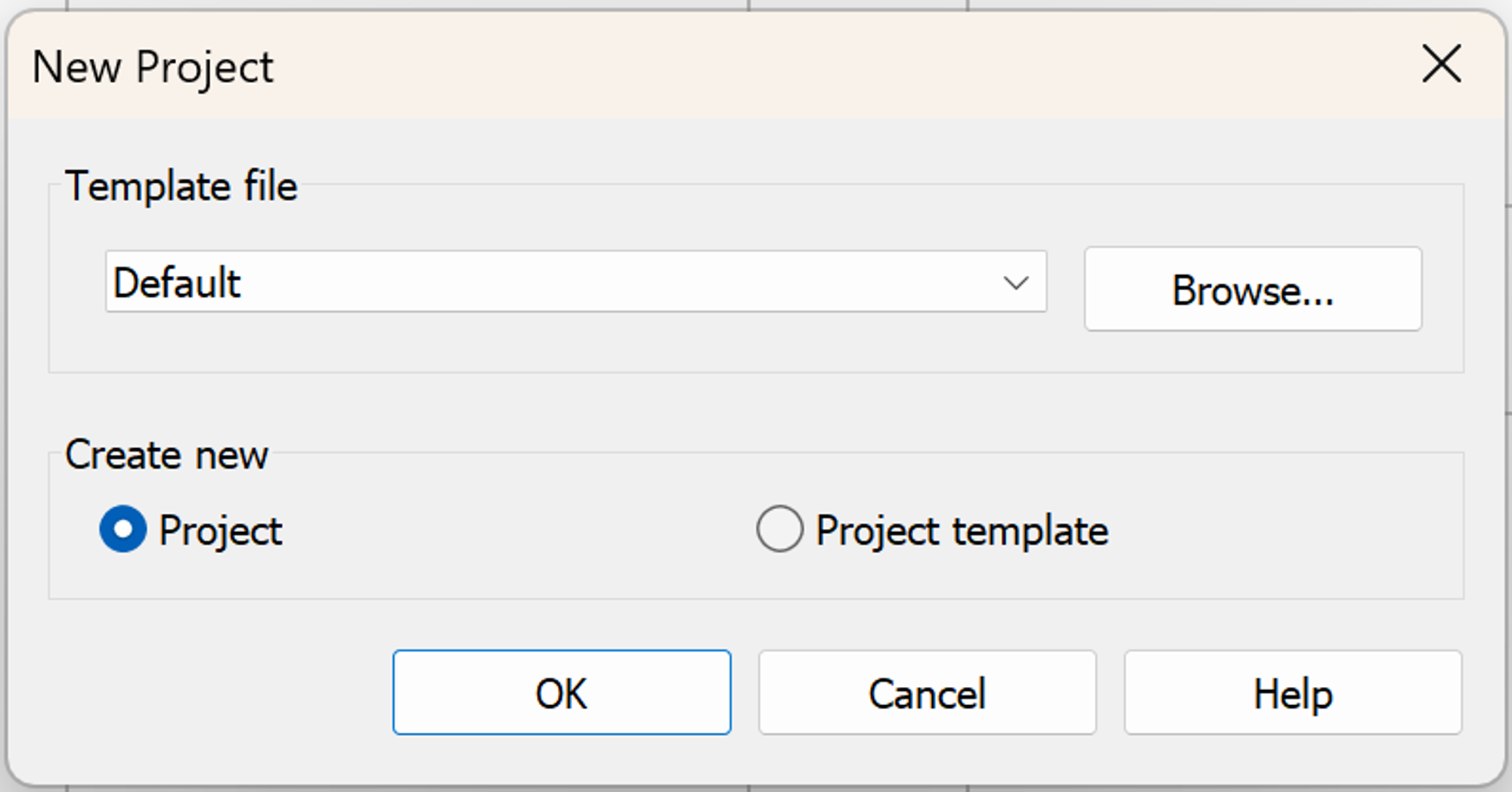
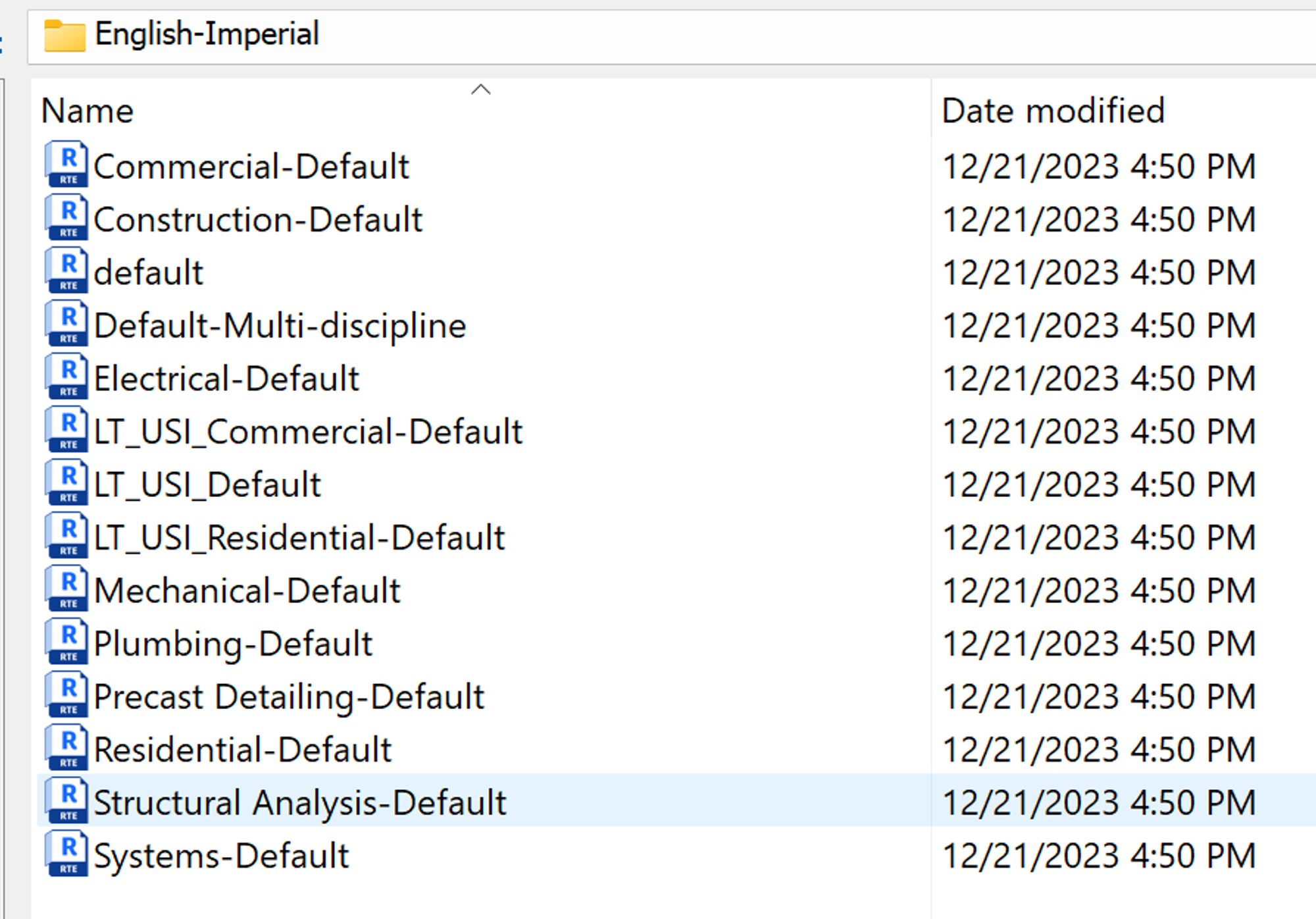
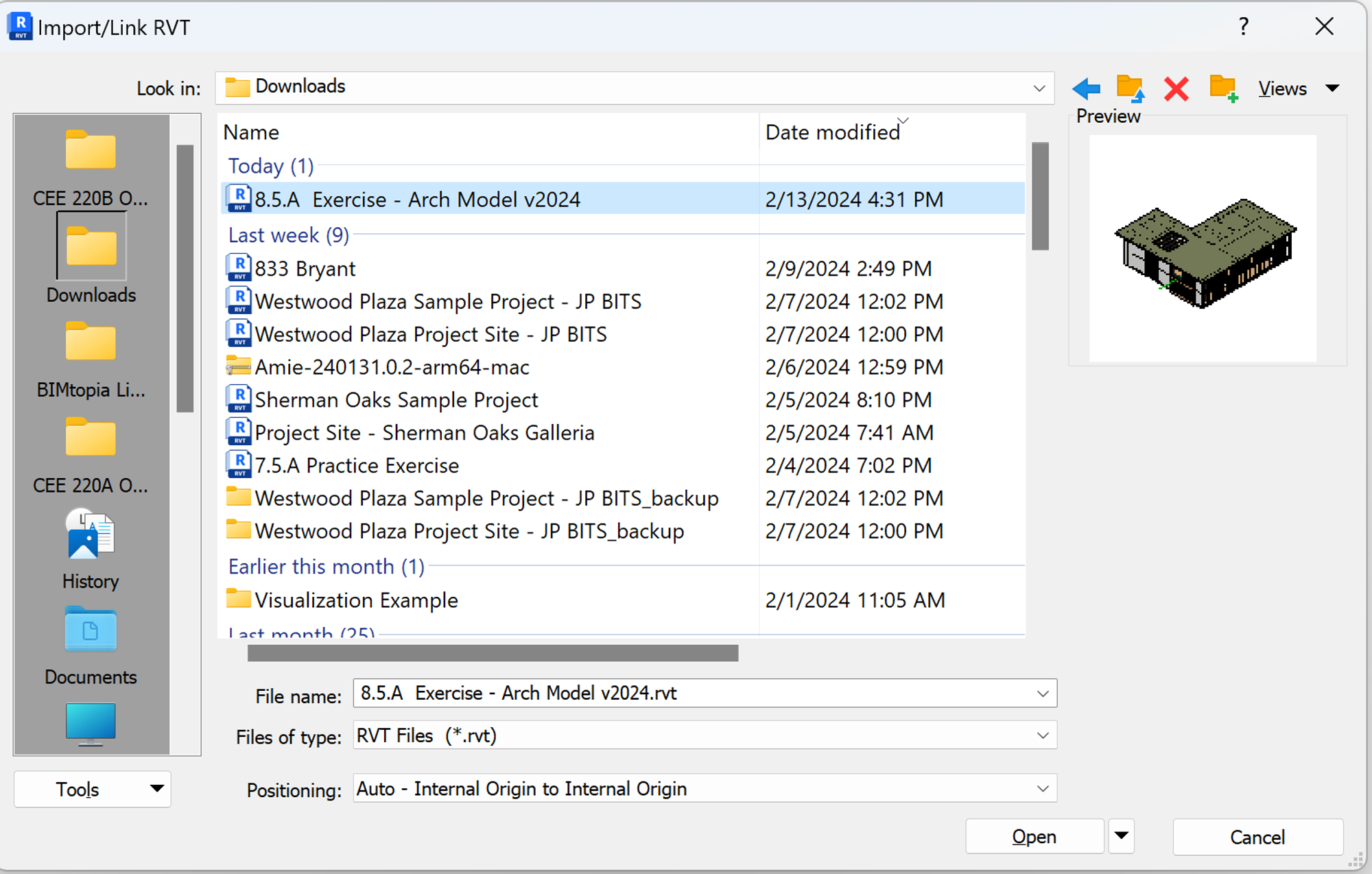
- Did you accidentally cover any floor openings (elevator, stairs, atrium)?
- Are any columns placed in the middle of the hallways or rooms?
- Did you meet the designer’s design intent?
Then, post your Practice Exercise results below.
What to Submit
Create a posting on this shared Notion page that includes:
- The screenshot of an interior view of your merged model from ACC Model Coordination
- A brief paragraph describing your structural system strategy

